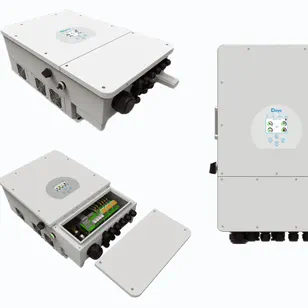Introduction
When setting up a solar energy system or a UPS (Uninterruptible Power Supply) for your home, the placement of inverters and batteries is critical to ensure reliable performance and longevity. Incorrect placement can lead to overheating, poor battery performance, and even damage to the equipment. This guide will walk you through the best practices for positioning your inverters and batteries, whether for a small home UPS system or a larger solar inverter setup.
Small UPS Systems: Keep It Close to Key Appliances
For a small UPS with a battery that doesn’t emit harmful fumes (such as those that are not car or AGM batteries), the best approach is to install it near the essential appliance it will support. For example, if you’re protecting a gas boiler, place the UPS nearby to ensure seamless operation during power outages. Simply plug the boiler into the UPS, and then connect the UPS to the wall outlet. In the event of a power failure, your boiler remains operational, and you can even use the UPS to charge devices like laptops and routers.
Larger Solar Inverters: Proximity to the Distribution Panel
For larger solar inverters or UPS systems, aim to place them as close to the home’s distribution panel (breaker box) as possible. This ensures efficient integration into your home’s electrical network. Ideal locations include corridors, garages, or clean utility rooms. Avoid placing the inverter too close to living spaces, as they can generate noise during operation, which could become a source of discomfort.
Important Tip: Solar inverters can be noisy. Placing them near living spaces might disrupt the household with unwanted noise. Opt for garages or hallways instead.

Avoid Extreme Temperatures and High Humidity
It’s crucial to avoid areas where the temperature fluctuates beyond the range of +10°C to +35°C (50°F to 95°F). While many hybrid inverters claim they can operate between -10°C and +40°C, real-world experience shows that running inverters outside the recommended range leads to frequent malfunctions, voiding warranties. Extreme cold or heat can cause oxidation of components or capacitor failure, leading to equipment breakdown.
For example, placing your inverter in a non-heated garage or an outdoor space could expose it to unfavorable conditions. High humidity is also a danger, as it can accelerate component wear and reduce the life of your inverter.
The Battery Dilemma: Temperature Sensitivity
Cold temperatures can drastically affect battery performance. Most types of batteries, including the popular and safe LiFePO4, struggle to charge when temperatures dip below +6°C (43°F). Additionally, cold storage leads to a significant drop in battery capacity. If you need to install your batteries in an unheated space, consult professionals for solutions like battery insulation or heating systems, as DIY solutions are often insufficient for these complex needs.
For more on protecting your energy system, see our guide on inrush currents and inverter selection , which provides insights into ensuring reliable power management.
Conclusion
The placement of your solar inverters, UPS systems, and batteries is key to ensuring their optimal performance and longevity. Avoid high-temperature and high-humidity environments, and keep critical components close to essential appliances for small setups or distribution panels for larger installations. If you must place batteries or inverters in an unheated area, consult a professional for safe installation methods.
For more guidance on integrating solar inverters into your home, check out our step-by-step guide on connecting a single-phase inverter to a three-phase power system , or learn how to maximize solar power with MPPT controllers .




